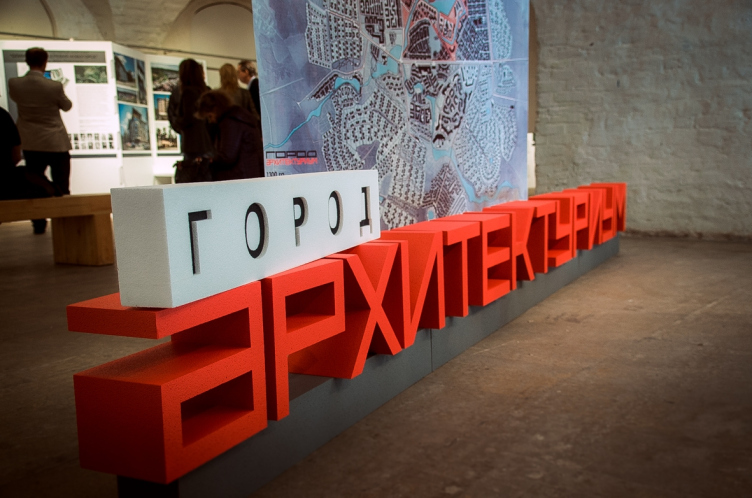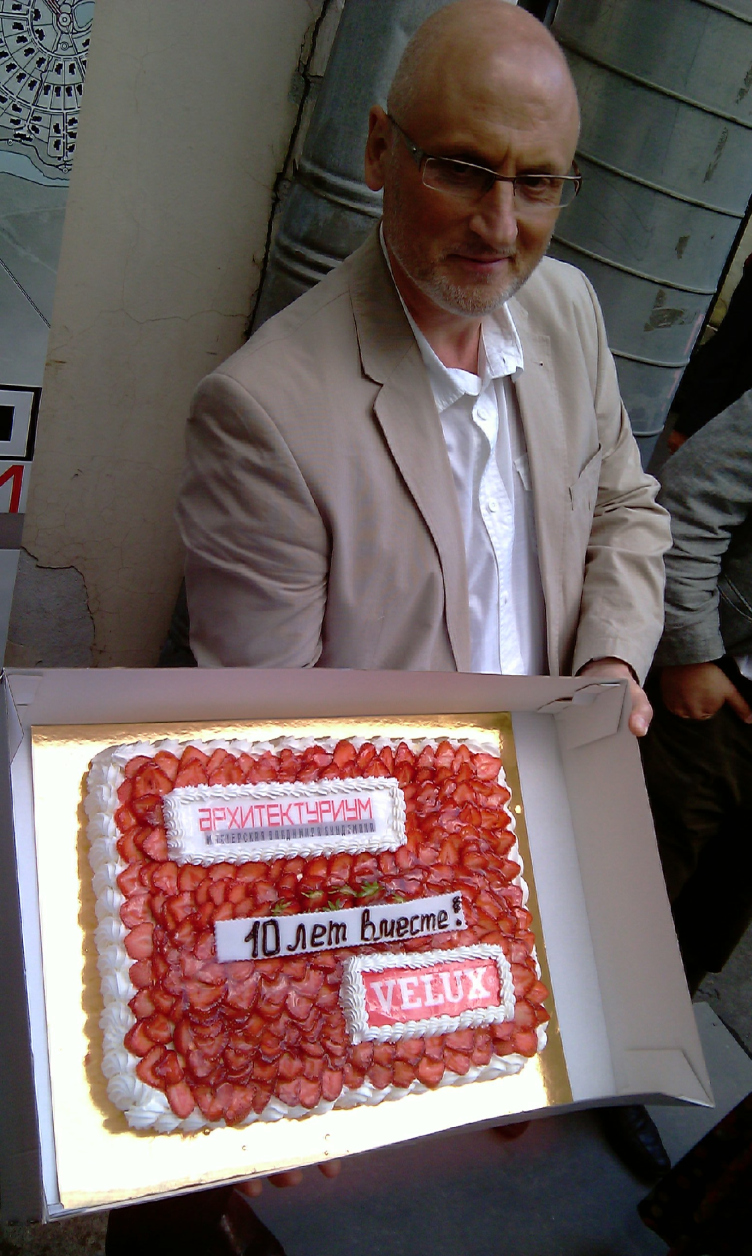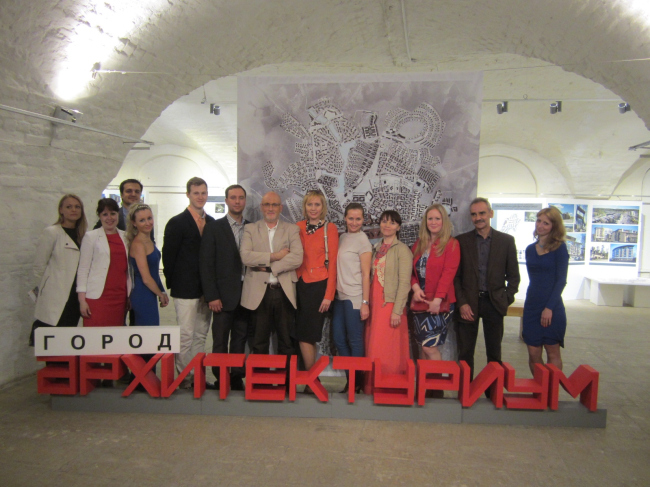
The team of the studio at the exhibition "Architecturium City" © "Architecturium"/ Yuri Pankratov
The anniversary exposition is unfolded in the Aptekarsky Prikaz but is bears a very remote likeness to the format of the traditional "reporting parade". Sharing about their ten years' work is done by Vladimir Bindeman and his team in the form of a master plan of an imaginary city that is formed by the blocks and quarters built by the company over the past decade. And, even though "Architecturium" is predominantly known for its townhouse settlements, over these years its portfolio has accumulated projects of varying magnitude: from small separate houses to large-scale residential districts that are now usually described as "multi-format".

"Architecturium City" Exhibition © "Architecturium"/ Yuri Pankratov
"When we came to the idea of a master plan covering all of our projects, and actually started drawing it, it turned out that all the 50 projects perfectly match one another" - shares Vladimir Bindeman. For "deploying" their city, "Architecturium" used the real topographic underlay of one of remote Moscow area districts, the only geographic "allowance" being the river that willfully crosses the territory at a few places. As the architect himself playfully says, the Skhodnya River smoothly flows into the Desna River: on the banks of the former, we will remind you at thus point, the constellation of settlements "Olympian Village of Novogorsk" is now under construction, and the latter has hosted the low-rise quarter of "Andersen".
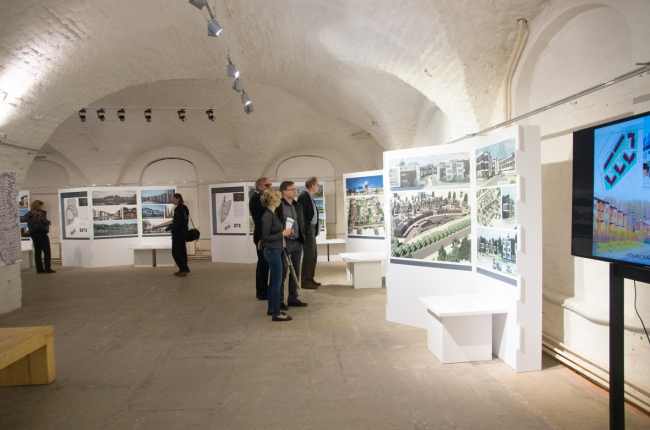
"Architecturium City" Exhibition © "Architecturium"/ Yuri Pankratov
Just as a real city should have it, its outskirts are less densely built, while, as one gets closer to the city center, the quarter grid grows ever denser and more rigorous. The studio also found a project worthy of being the center of the imaginary megalopolis - this is the contest project of the new building of Mariborskaya Art Gallery that the architects treated as a gigantic glass ellipse, carefully inscribed into the quarter created from scratch. We see a city with a thought-out system and hierarchy of roadways and a colorful palette of public territories that make this city look really sustainable and comfortable to live in. "Of course, not all of the pieces of this jigsaw puzzle were designed and implemented in real life - Vladimir Bindeman admits - some of these projects were only hope to develop in the future".
Still, though, the main meaning of making such a master plan was showing the possible prospects of future development of the suburbs of large Russian cities, that have been filled, since the early 1990's, with closed settlements, surrounded by fences with checkpoints and completely isolated from one another. "What we are proposing is a positive scenario of the future development of suburbia, when the suburbs are united into a single space, comfortable to live in and move around" - say the architects.
The exposition, whose ideological and visual center is the gigantic master plan, is formed by the ten projects that are the most important for the studio. Located in the chronological order, they line up into an imposing retrospective chain that demonstrates the gradual evolution of the studio's approaches to the integrated improvement of the territories and turning them into comfortable residential clusters that sport a recognizable image. Besides the boards with the drawing, renders, and photographs, each object is represented by an elegant snow-white miniature, made specially for this exhibition, in the spirit of the white walls and vaults of the Aptekarsky Prikaz.
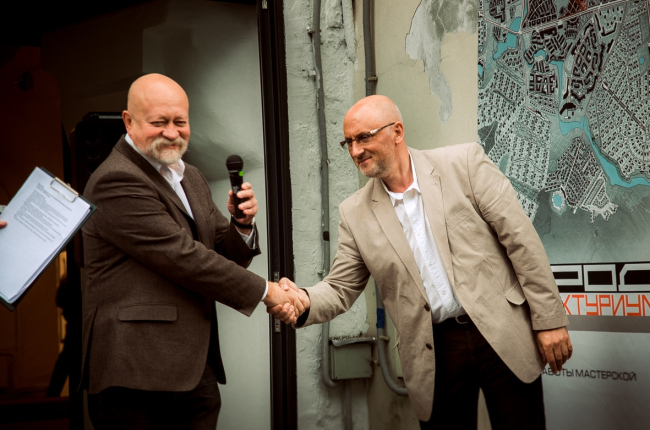
Nikolai Shumakov and Vladimir Bindeman at the inauguration of "Architecturium City" Exhibition © "Architecturium"/ Yuri Pankratov
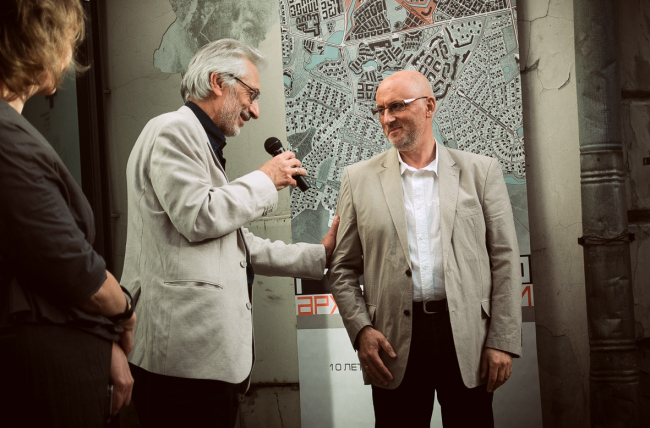
Alexander Asadov and Vladimir Bindeman at the inauguration of "Architecturium City" Exhibition © "Architecturium"/ Yuri Pankratov
Many famous architects came to the Museum of Architecture to congratulate the team of Vladimir Bindeman on their tenth anniversary. Alexander Asadov wished "Architecturium City " self-realization and growing, and Mikhail Khazanov called this exhibition a great study guide for the young designers, for whom it is high time to stop designing for Moscow and its surrounding area "the 35-story villages". Nikolai Shumakov thanked the architects for the beautiful and "high-quality" environment that they increase with their every project, and Sergey Melnichenko noted that Vladimir Bindeman and his colleagues perform the most important social mission cultivating the taste for living in the country at one with the nature.
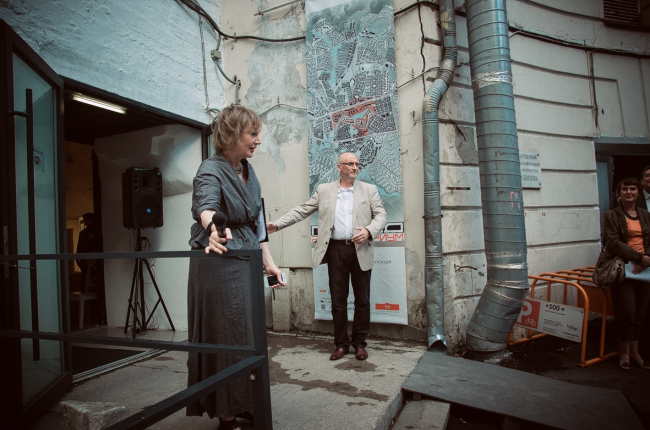
Irene Korobyina and Vladimir Bindeman at the inauguration of "Architecturium City" Exhibition © "Architecturium"/ Yuri Pankratov

Birthday cake from the company Velux © "Architecturium"/ Yuri Pankratov
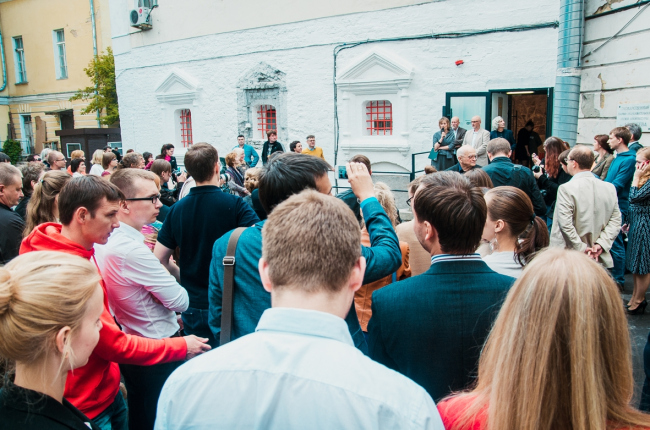
At the opening ceremony of the exhibition "Architecturium City" © "Architecturium"/ Yuri Pankratov
The team of the studio at the exhibition "Architecturium City" © "Architecturium"/ Yuri Pankratov
"Architecturium City" Exhibition © "Architecturium"/ Yuri Pankratov
"Architecturium City" Exhibition © "Architecturium"/ Yuri Pankratov
Nikolai Shumakov and Vladimir Bindeman at the inauguration of "Architecturium City" Exhibition © "Architecturium"/ Yuri Pankratov
Alexander Asadov and Vladimir Bindeman at the inauguration of "Architecturium City" Exhibition © "Architecturium"/ Yuri Pankratov
Irene Korobyina and Vladimir Bindeman at the inauguration of "Architecturium City" Exhibition © "Architecturium"/ Yuri Pankratov
Birthday cake from the company Velux © "Architecturium"/ Yuri Pankratov
At the opening ceremony of the exhibition "Architecturium City" © "Architecturium"/ Yuri Pankratov





